Abstract
Metabolic studies were performed on 23 burned children. They were studied sequentially until their burn wounds were healed. A metabolic study lasted 20 minutes, during which continuous measurements were made of O2 consumption and CO2 production rates, rectal temperature, average surface temperatures (dressings, skin and wound), body heat content, and rate of body weight loss using a bed scale. These measurements allowed solution of the heat balance equation for each study period. After 24 hours in a constant temperature room kept at 28 C and 40% relative humidity, metabolic studies were initiated when blood was drawn for catecholamine assay, followed by a metabolic analysis, after which dressings were removed and fresh silvadene applied to the wounds. No dressings were applied. Metabolic analyses were repeated after two and four hours of exposure, after which blood for catecholamine analysis was drawn and the study terminated. Without dressings in a thermally neutral environment, burn patients demonstrated an increased rate of heat loss of 27 watts/square meter body surface area (W/M2), compared with the predicted normal. The major portion of this increment is by evaporation, which increased 300%. The rate of heat production equals heat loss, and is increased 50% above the predicted normal. Occlusive dressings result in a 15 W/M2 decrease in the rate of heat loss, about evenly divided between evaporative and dry routes, with a corresponding 15 W/M2 decrease in the rate of heat production. Plasma catecholamine levels of bandaged burn patients are not significantly different from values for healed burn patients, and do not correlate with the rate of heat production. The increased heat production of burn patients is a response to an increased rate of heat loss, not vice versa. The use of occlusive dressings substantially reduces the energy requirements to manageable levels, even in patients with very large burns.
Full text
PDF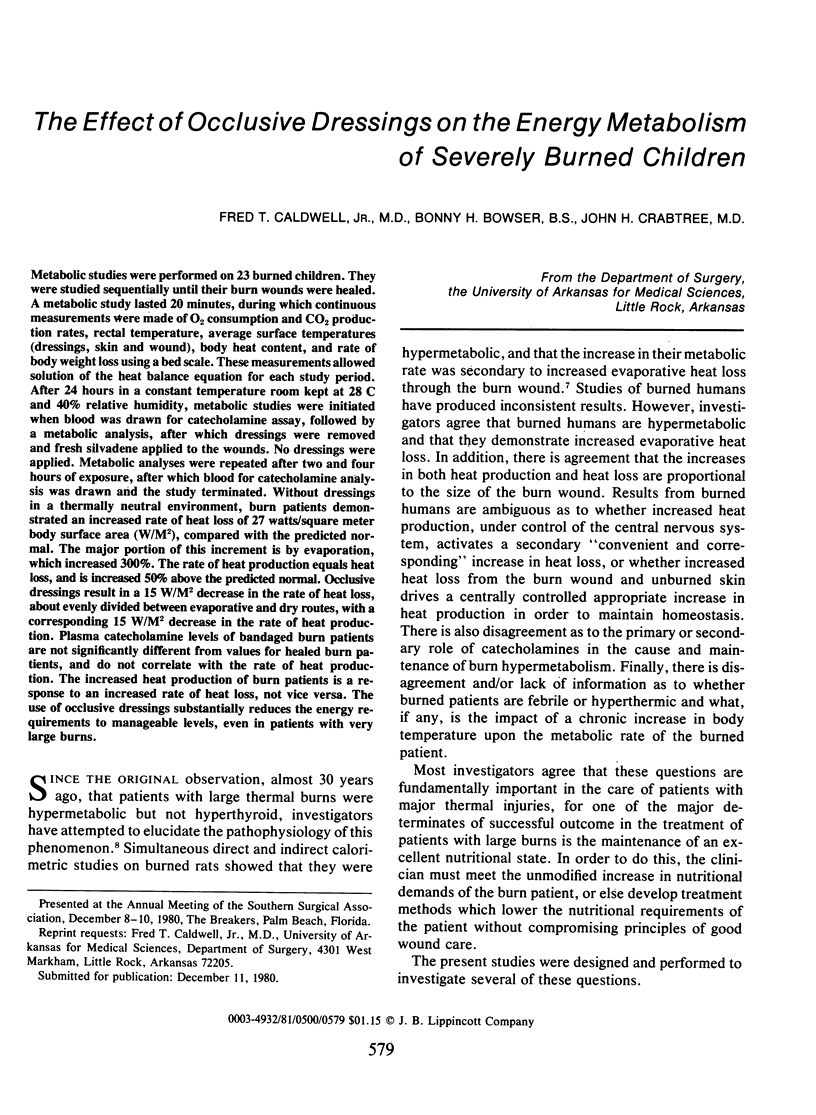
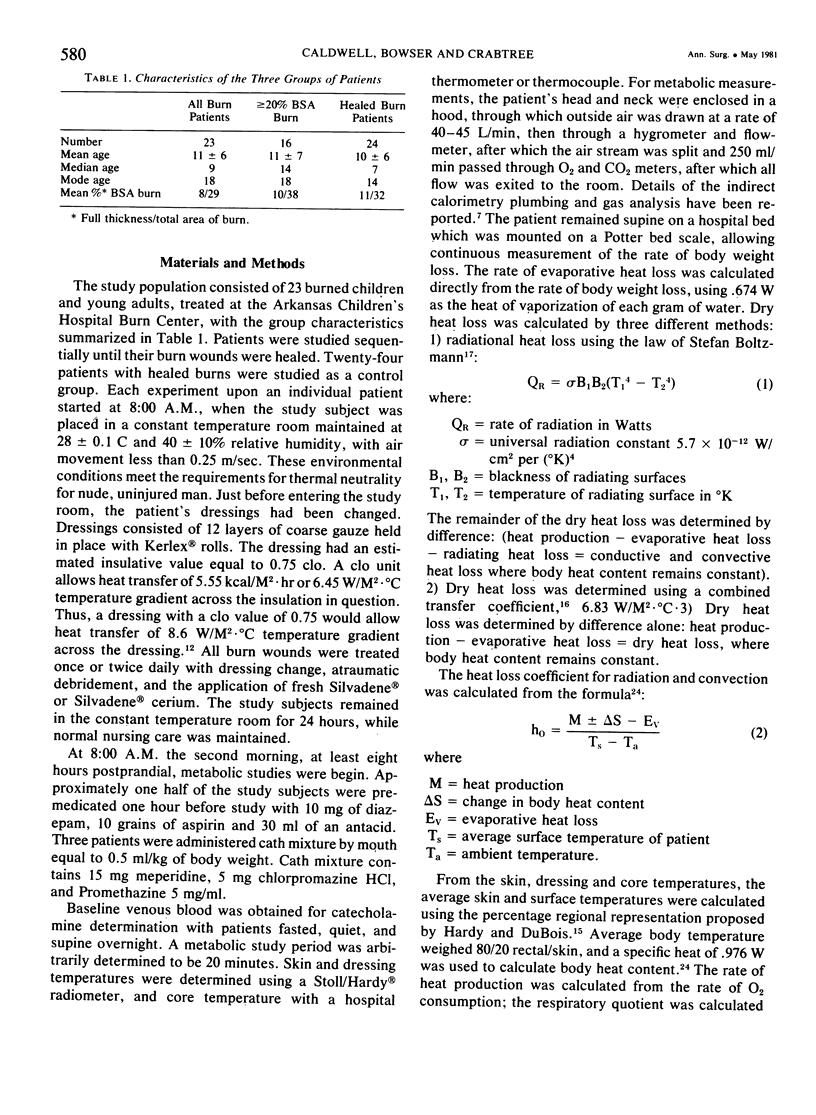
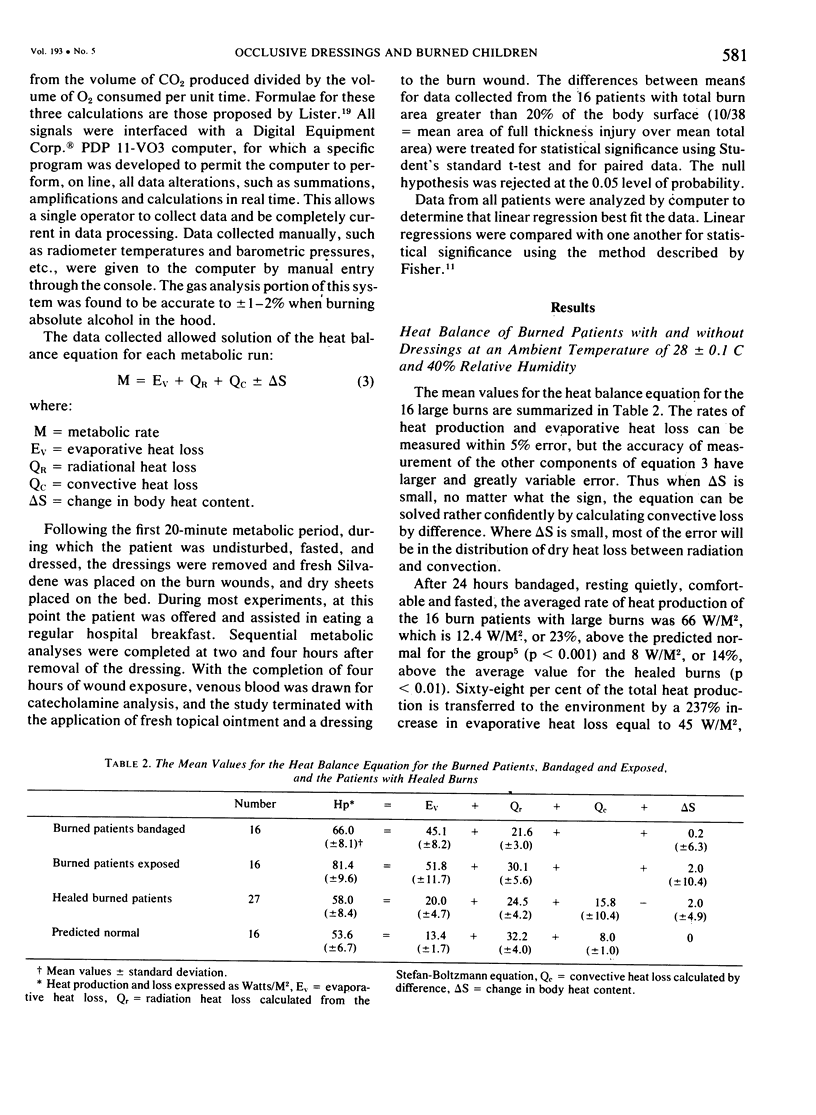
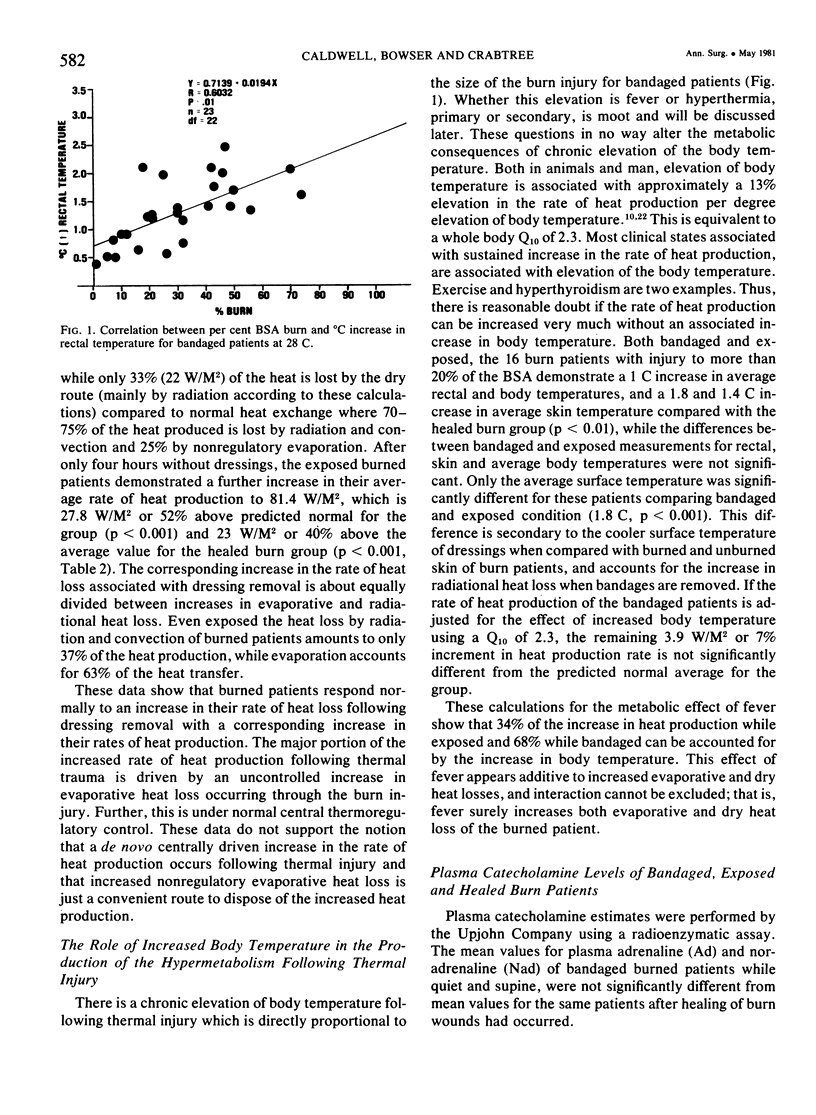
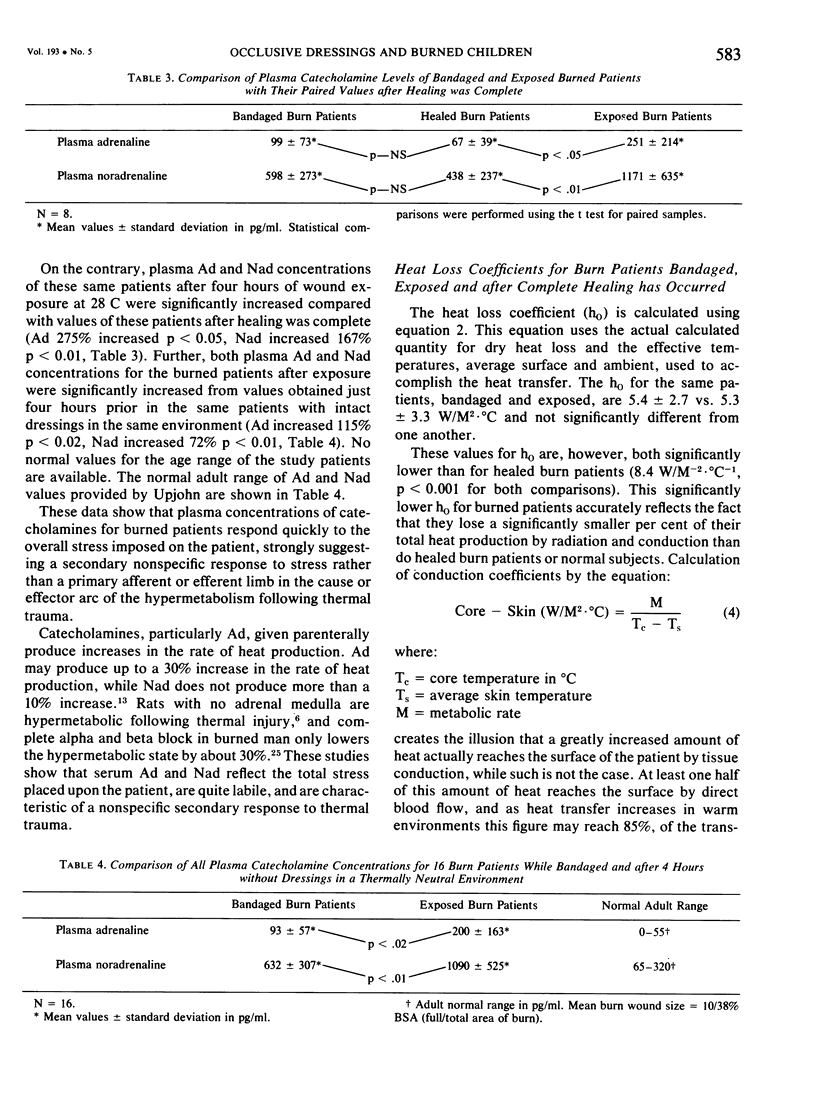
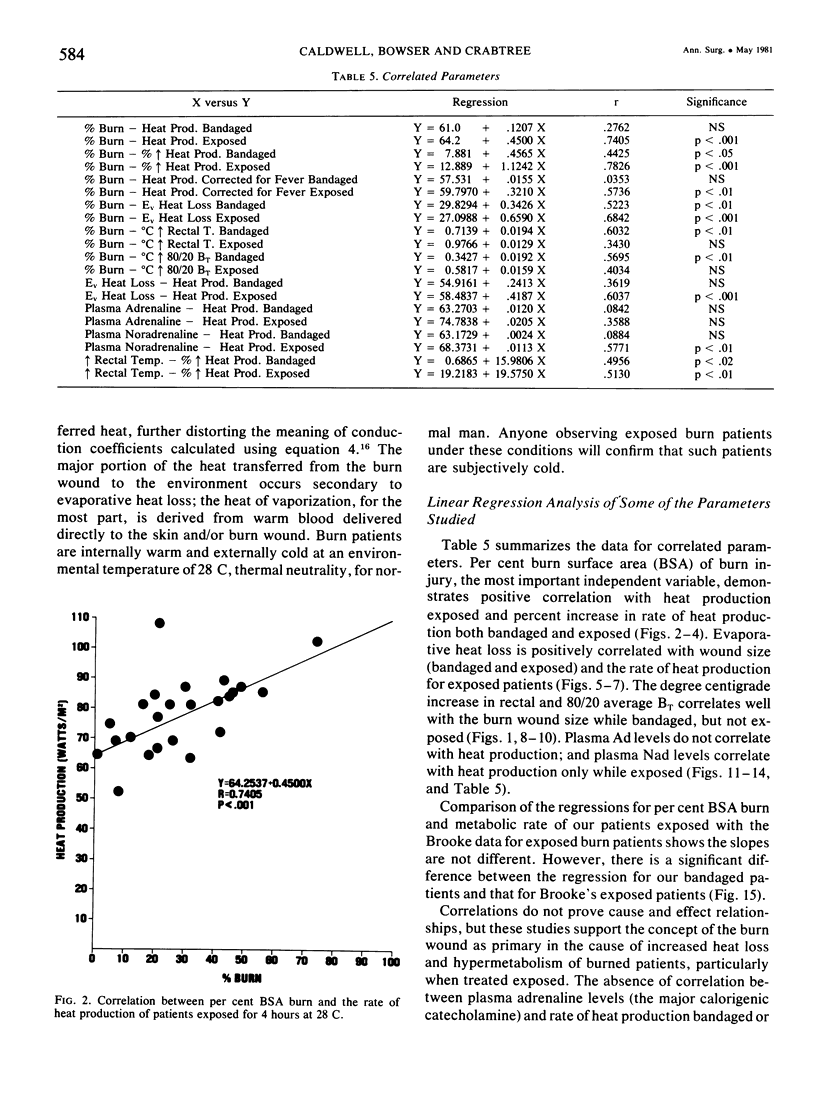
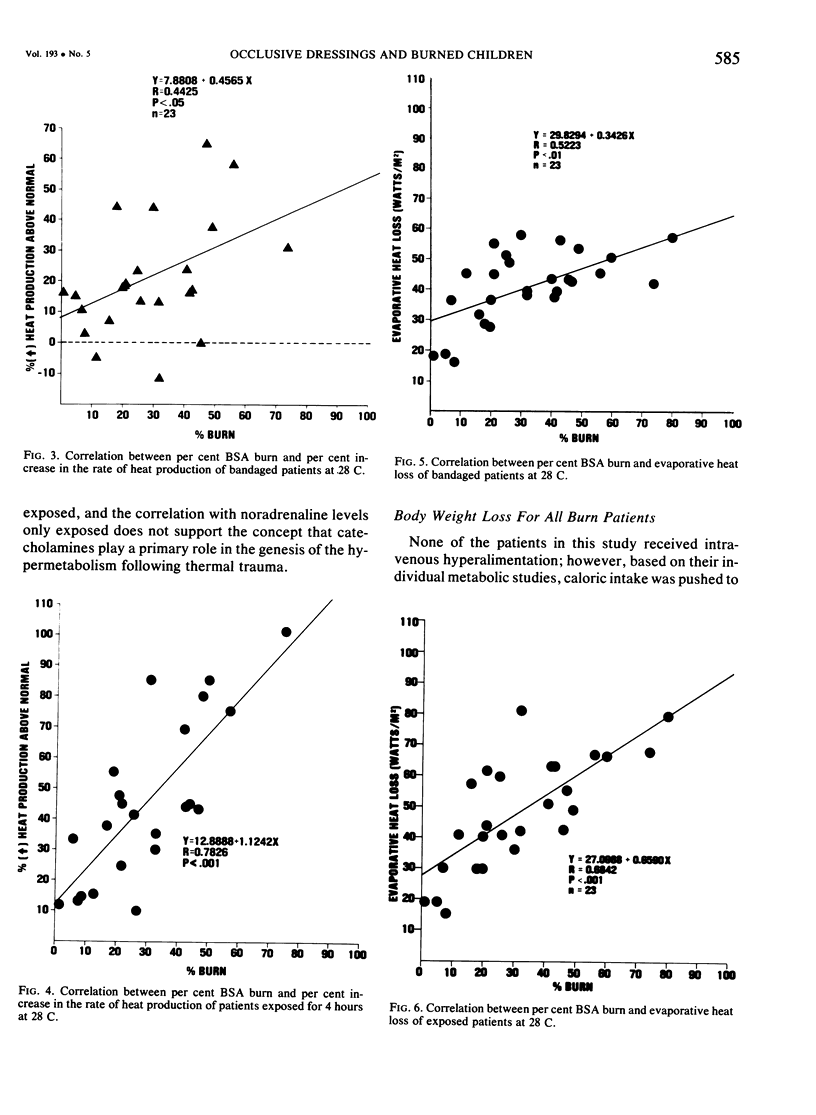
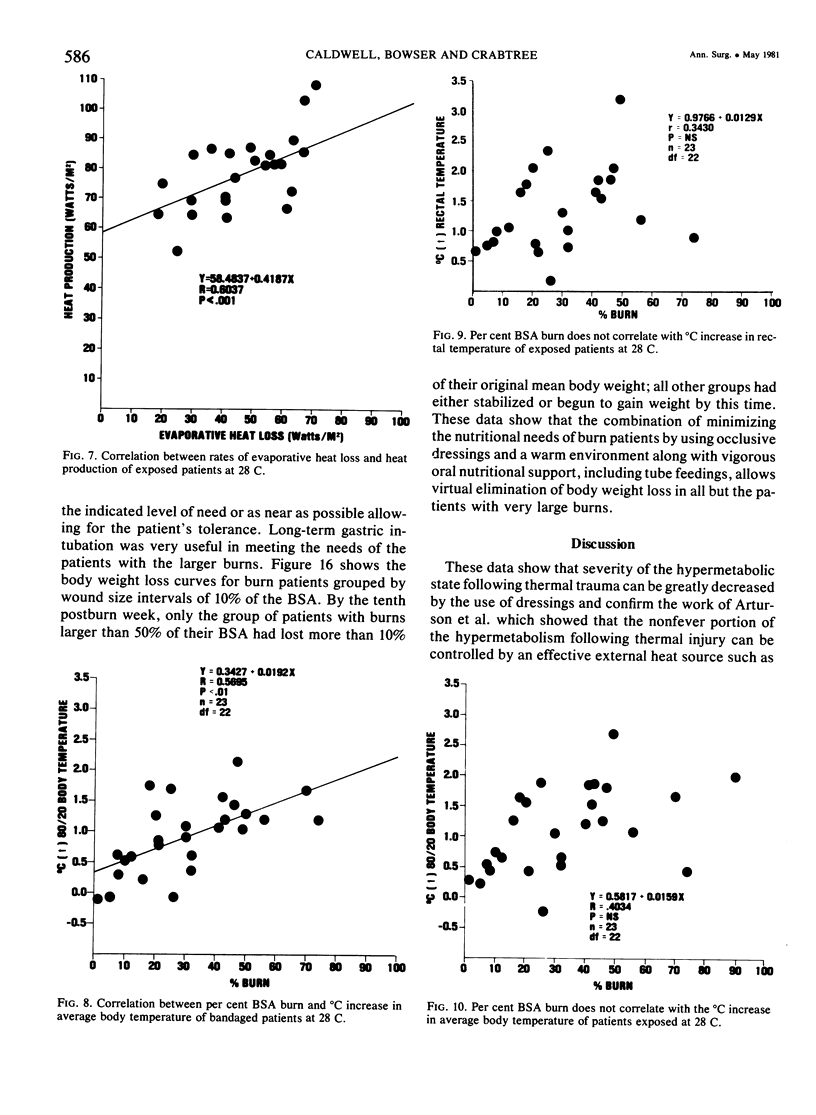
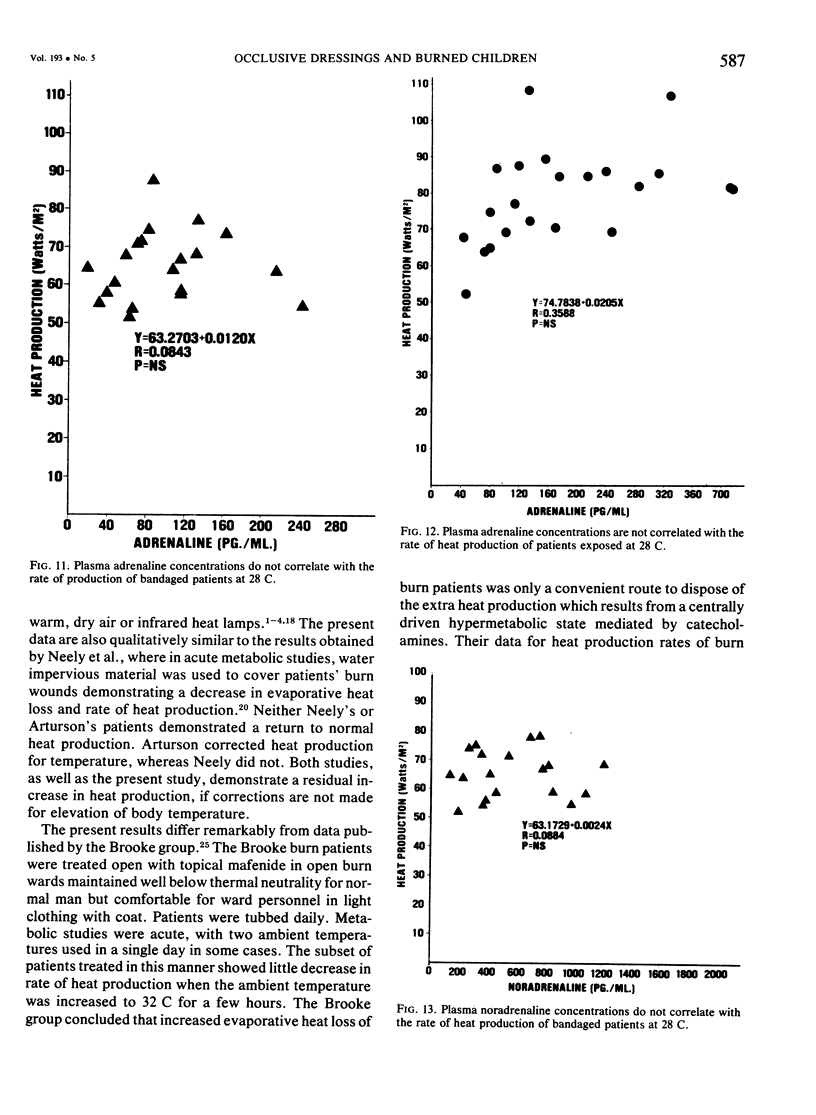
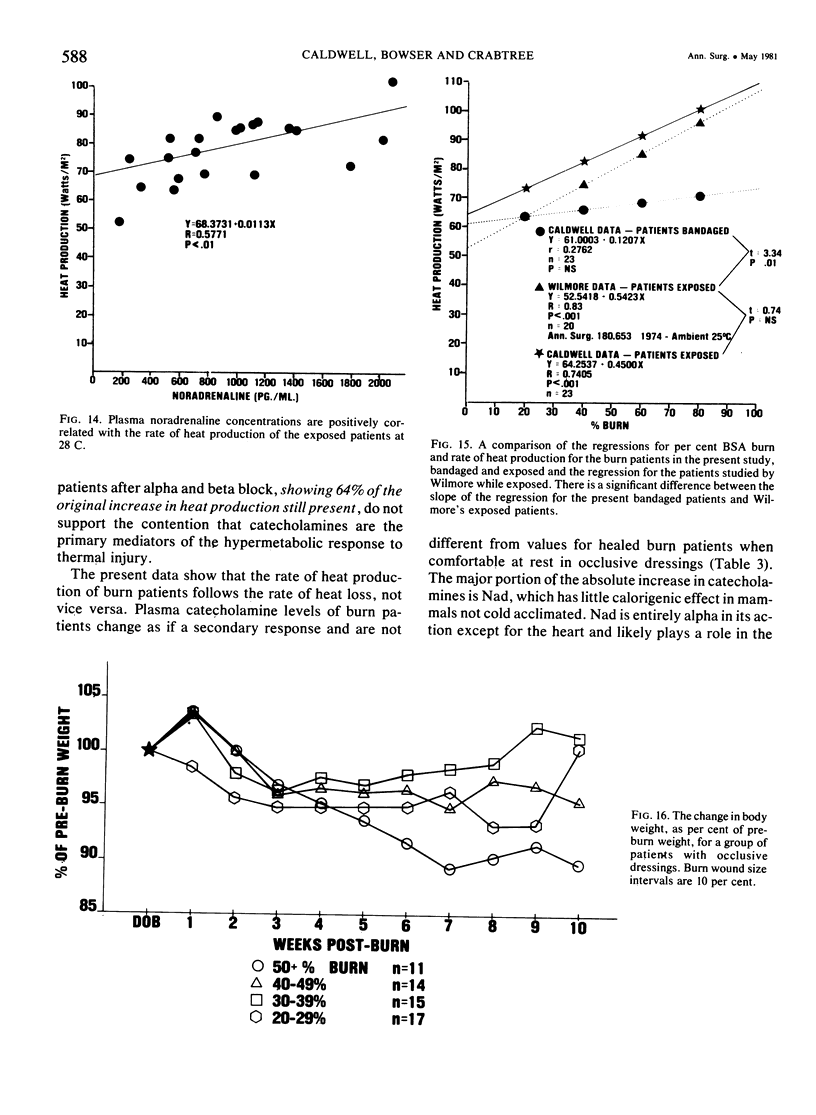
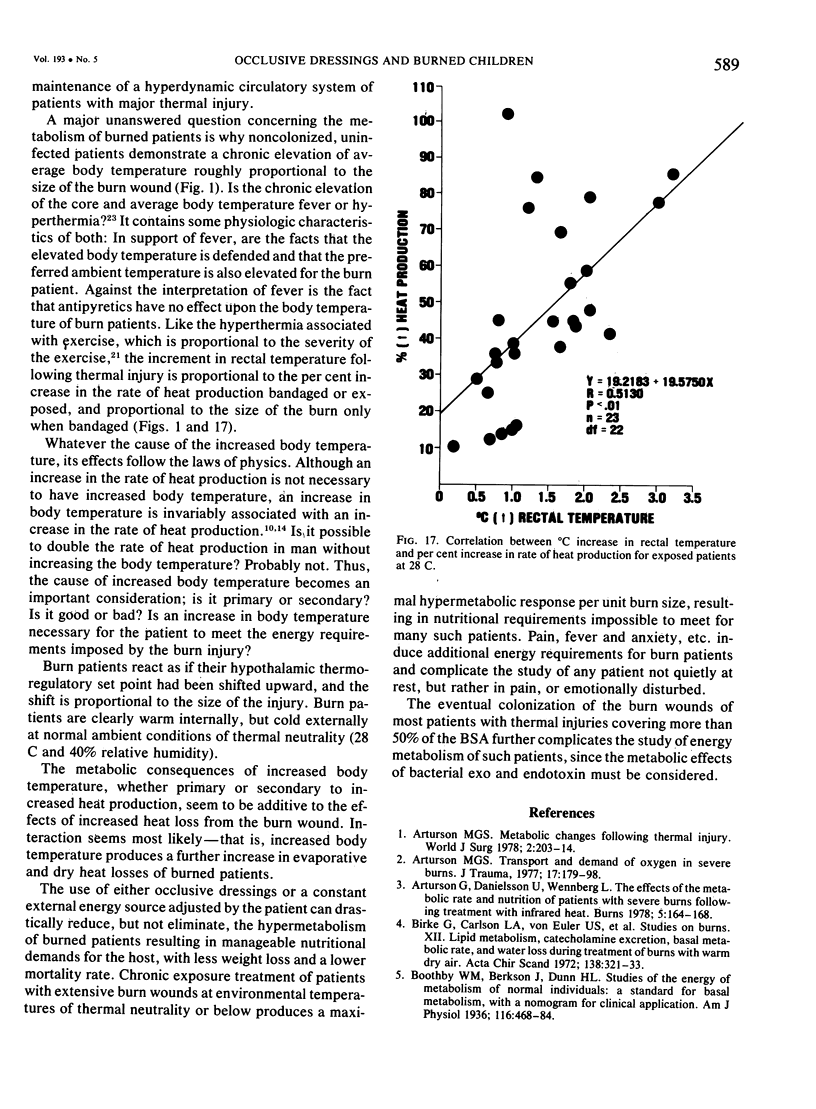
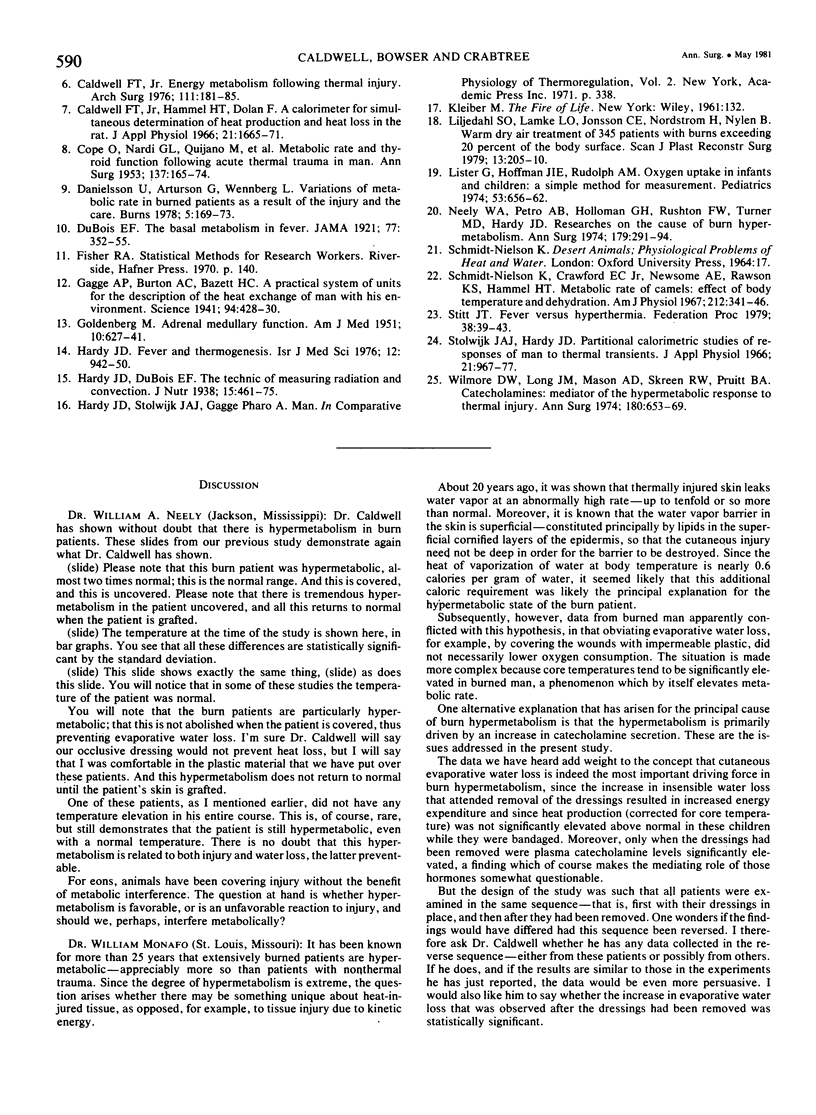
Selected References
These references are in PubMed. This may not be the complete list of references from this article.
- Arturson G. S. Transport and demand of oxygen in severe burns. J Trauma. 1977 Mar;17(3):179–198. doi: 10.1097/00005373-197703000-00001. [DOI] [PubMed] [Google Scholar]
- Arturson M. G. Metabolic changes following thermal injury. World J Surg. 1978 Mar;2(2):203–214. doi: 10.1007/BF01553553. [DOI] [PubMed] [Google Scholar]
- Birke G., Carlson L. A., von Euler U. S., Liljedahl S. O., Plantin L. O. Studies on burns. XII. Lipid metabolism, catecholamine excretion, basal metabolic rate, and water loss during treatment of burns with warm dry air. Acta Chir Scand. 1972;138(4):321–333. [PubMed] [Google Scholar]
- COPE O., NARDI G. L., QUIJANO M., ROVIT R. L., STANBURY J. B., WIGHT A. Metabolic rate and thyroid function following acute thermal trauma in man. Ann Surg. 1953 Feb;137(2):165–174. doi: 10.1097/00000658-195302000-00003. [DOI] [PMC free article] [PubMed] [Google Scholar]
- Caldwell F. T., Hammel H. T., Dolan F. A calorimeter for simultaneous determination of heat production and heat loss in the rat. J Appl Physiol. 1966 Sep;21(5):1665–1671. doi: 10.1152/jappl.1966.21.5.1665. [DOI] [PubMed] [Google Scholar]
- Caldwell F. T., Jr Energy metabolism following thermal burns. Arch Surg. 1976 Feb;111(2):181–185. doi: 10.1001/archsurg.1976.01360200087017. [DOI] [PubMed] [Google Scholar]
- GOLDENBERG M. Adrenal medullary function. Am J Med. 1951 May;10(5):627–641. doi: 10.1016/0002-9343(51)90332-4. [DOI] [PubMed] [Google Scholar]
- Gagge A. P., Burton A. C., Bazett H. C. A PRACTICAL SYSTEM OF UNITS FOR THE DESCRIPTION OF THE HEAT EXCHANGE OF MAN WITH HIS ENVIRONMENT. Science. 1941 Nov 7;94(2445):428–430. doi: 10.1126/science.94.2445.428. [DOI] [PubMed] [Google Scholar]
- Hardy J. D. Fever and thermogenesis. Isr J Med Sci. 1976 Sep;12(9):942–950. [PubMed] [Google Scholar]
- Liljedahl S. O., Lamke L. O., Jonsson C. E., Nordström H., Nylén B. Warm dry air treatment of 345 patients with burns exceeding 20 per cent of the body surface. Scand J Plast Reconstr Surg. 1979;13(1):205–210. doi: 10.3109/02844317909013058. [DOI] [PubMed] [Google Scholar]
- Lister G., Hoffman J. I., Rudolph A. M. Oxygen uptake in infants and children: a simple method for measurement. Pediatrics. 1974 May;53(5):656–662. [PubMed] [Google Scholar]
- Neely W. A., Petro A. B., Holloman G. H., Jr, Rushton F. W., Jr, Turner M. D., Hardy J. D. Researches on the cause of burn hypermetabolism. Ann Surg. 1974 Mar;179(3):291–294. doi: 10.1097/00000658-197403000-00007. [DOI] [PMC free article] [PubMed] [Google Scholar]
- Schmidt-Nielsen K., Crawford E. C., Jr, Newsome A. E., Rawson K. S., Hammel H. T. Metabolic rate of camels: effect of body temperature and dehydration. Am J Physiol. 1967 Feb;212(2):341–346. doi: 10.1152/ajplegacy.1967.212.2.341. [DOI] [PubMed] [Google Scholar]
- Stitt J. T. Fever versus hyperthermia. Fed Proc. 1979 Jan;38(1):39–43. [PubMed] [Google Scholar]
- Stolwijk J. A., Hardy J. D. Partitional calorimetric studies of responses of man to thermal transients. J Appl Physiol. 1966 May;21(3):967–977. doi: 10.1152/jappl.1966.21.3.967. [DOI] [PubMed] [Google Scholar]
- Wilmore D. W., Long J. M., Mason A. D., Jr, Skreen R. W., Pruitt B. A., Jr Catecholamines: mediator of the hypermetabolic response to thermal injury. Ann Surg. 1974 Oct;180(4):653–669. doi: 10.1097/00000658-197410000-00031. [DOI] [PMC free article] [PubMed] [Google Scholar]


